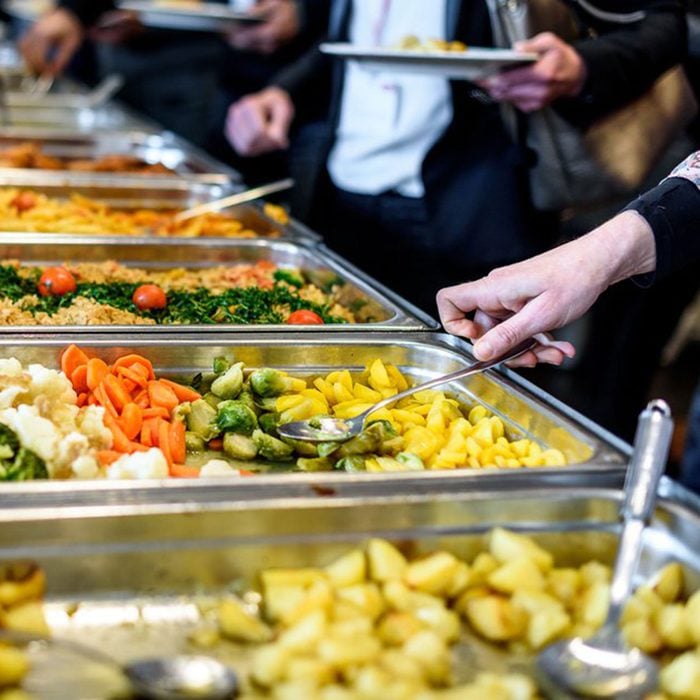
For some, an all-you-can-eat buffet isn’t a meal, it’s a challenge. But filling plate after plate to get the most for your dollar could compromise your health. “That competitive mentality and going in overly hungry sets you up to overeat and give you an awful feeling about 20 minutes after you’re done,” says Lauri Wright, PhD, a spokesperson for the Academy of Nutrition and Dietetics and chairperson of the department of nutrition and dietetics at the University of North Florida.
Not only can all-you-can-eat buffets derail your diet, but they could also put you at higher risk for getting sick. Almost any food can put you at risk for food-borne illness if it hasn’t been handled correctly, notes Shelley Feist, executive director of the Partnership for Food Safety Education. And it’s tough to tell from eyeballing a buffet if the cream of mushroom soup or the sushi is being kept hot or cold enough.
“The zone between 40 and 140 degrees Fahrenheit is what we call the danger zone because at those temperatures, bacteria love to grow,” Feist says. To minimize your risk, here are some things to avoid next time you hit the buffet line.
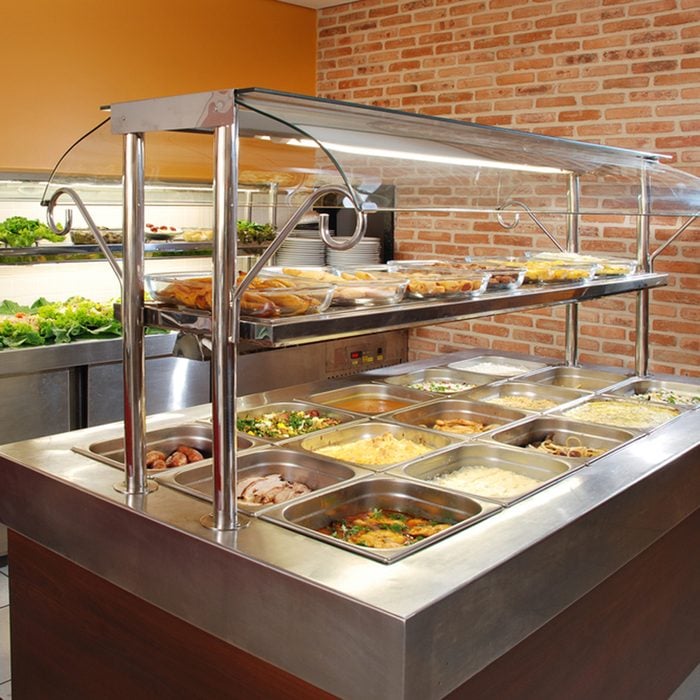
The sneeze guard
You should always wash your hands before approaching a buffet. And be sure not to touch the sneeze guard, which could be a breeding ground for germs from all the people coughing and sniffling around you. “Your greatest risk for contamination is more often going to be from other people taking that food—whether that’s with their hands or whether it’s airborne,” says Jennifer Quinlan, PhD, a microbiologist at Drexel University. Find out the 8 signs of food poisoning that everyone should know.
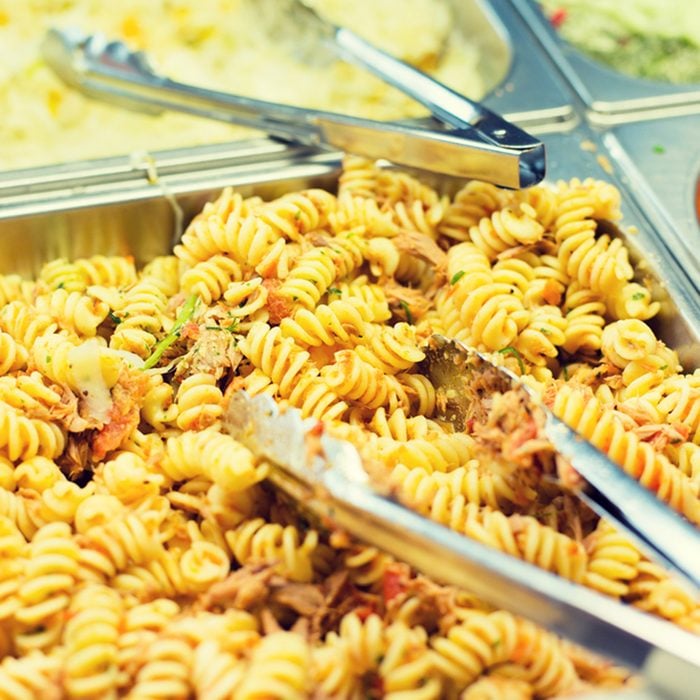
Buried utensils
You may think you’re doing everyone a favor by rescuing the serving spoon that somehow dropped into the macaroni and cheese. But think about how many other people have already touched that utensil. “We’re often really careful about touching the handle on the door leaving the bathroom,” Quinlan says.“Well, it’s the same idea.” Utensil handles are considered contaminated, so don’t touch more of them than you have to. Plus, any food that a utensil has fallen into should be replaced (so you may also want to avoid that tray). Quinlan recommends using a hand sanitizer after you get your food and before eating. Be sure you never eat any of these foods raw.
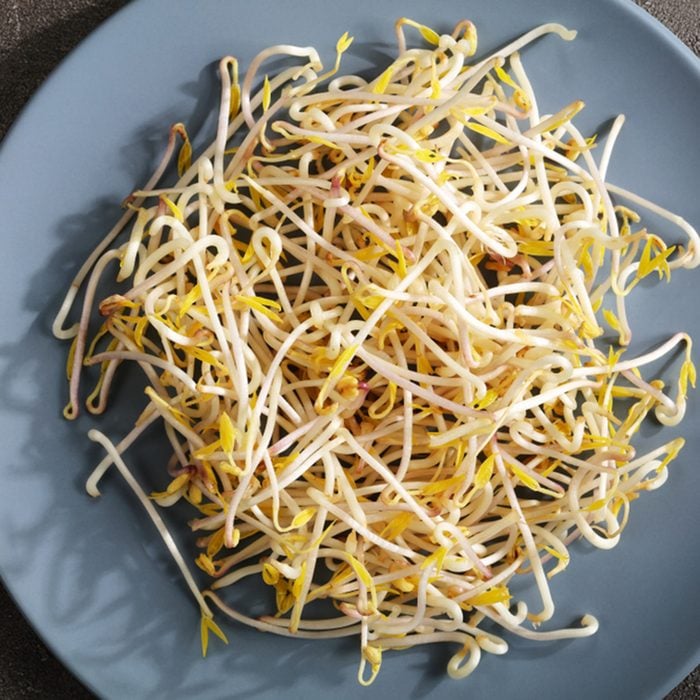
Sprouts
Greens are generally a good choice amid the array of high-calorie choices at the typical all-you-can-eat buffet. One exception? Sprouts. “They grow in damp environments, and it’s hard to get them thoroughly cleaned,” says Rene Ficek, RN, of Seattle Sutton’s Healthy Eating. “That’s why people get sick from sprouts so often.” On a related note, the CDC recently cautioned people not to eat romaine lettuce, which has been implicated in an outbreak of the E. coli bacteria that has sickened people in more than 30 states.
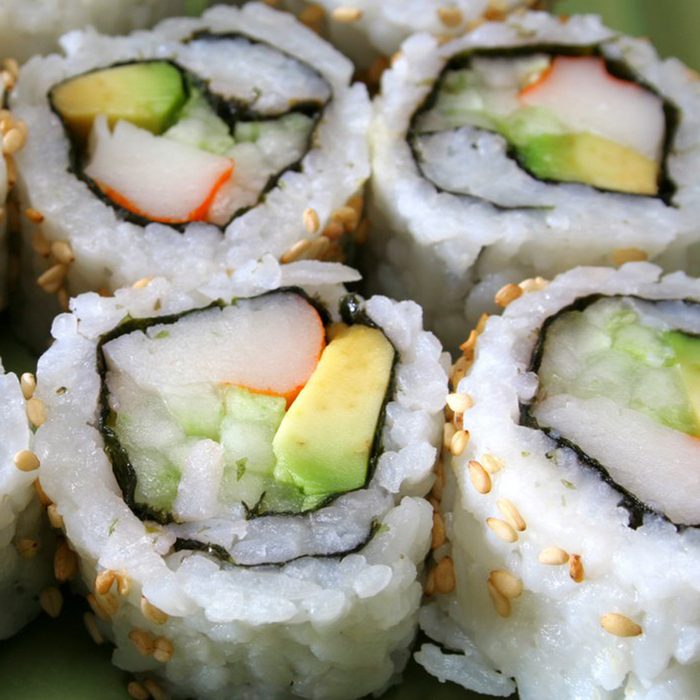
Sushi
Sushi may seem like a healthy option, but preparing it safely requires starting with good-quality seafood and plenty of expertise. “If you go to a high-dollar sushi restaurant, there’s still a risk you take by enjoying seafood,” Ficek says. “You put that on a buffet and try and keep it the right temperature, you’re basically asking to get sick,” she says.
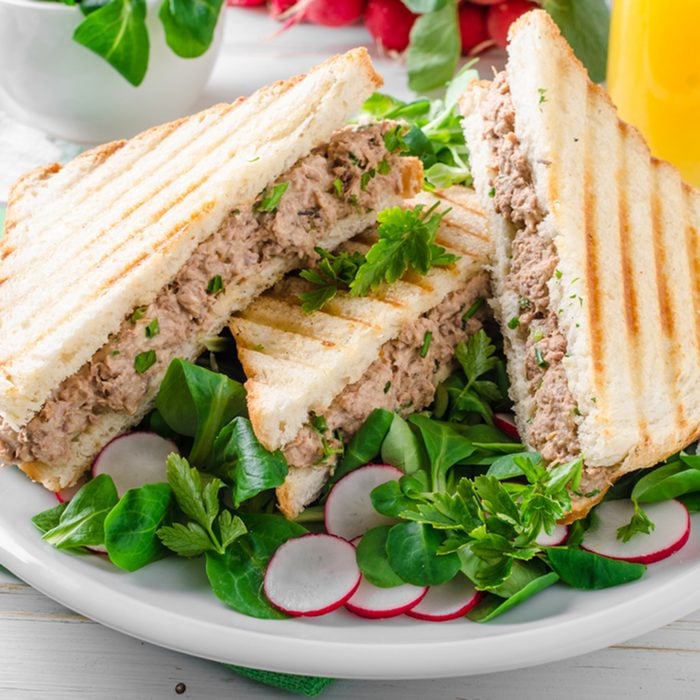
Tuna
It’s hard to tell how cold food is kept on at a buffet, which makes tuna another less-than-great option. “Tuna has to be kept at a colder temperature than other types of fish because it’s especially susceptible to certain types of bacteria,” Ficek says. A good rule of thumb? Look at how often food seems to be attended to by restaurant workers. Find out secrets restaurant workers aren’t telling you.
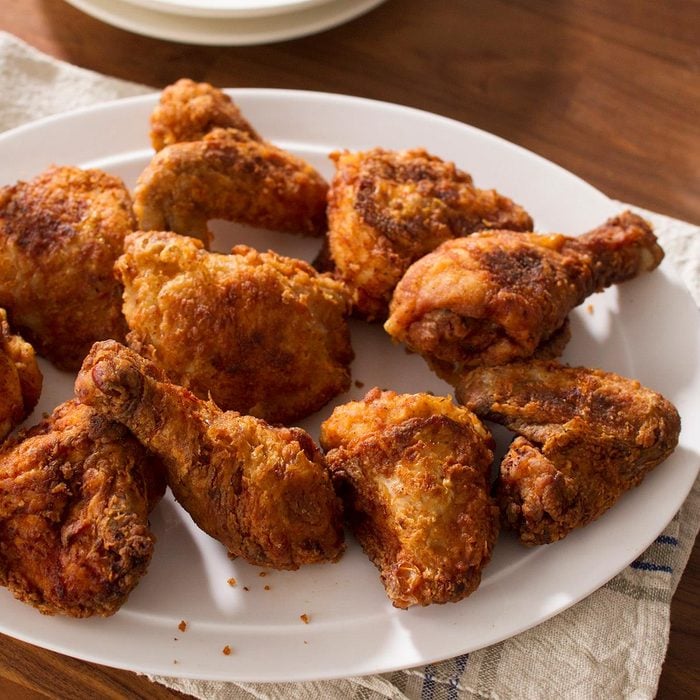
Fried foods
Restaurants that host all-you-can-eat buffets often use cheap oils that are filled with artery-clogging hydrogenated oil to fry foods. “Every time you put something in a deep fryer, it acts like a sponge and soaks up as much grease and saturated and trans fat as possible,” Ficek says. If you are jonesing for something fried like an egg roll or shrimp, ask for it to be prepared fresh and limit your portion.
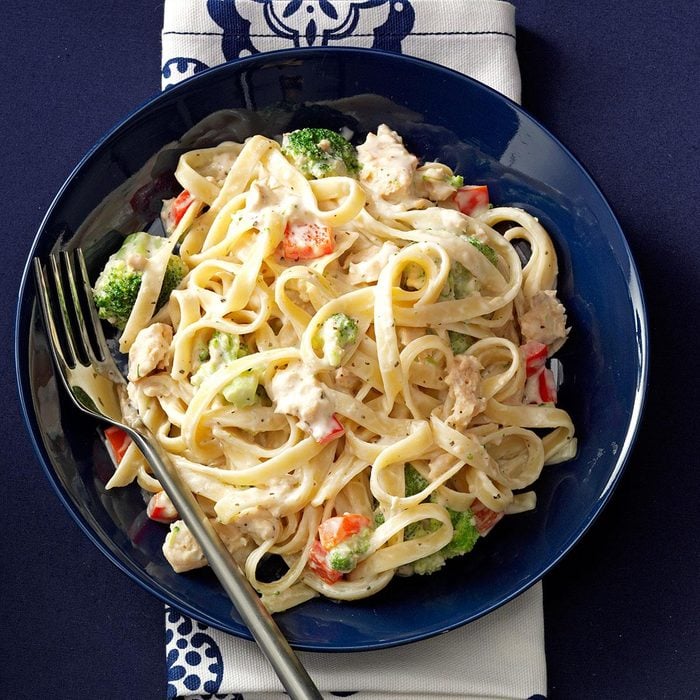
Cream-based dishes
You should also avoid soups and pasta dishes filled with butter and cream. “All of those are packed with saturated fat, which increases your cholesterol and can damage your heart muscle,” Ficek says. She recommends opting for red sauces like marinara over white sauces whenever possible. Take a look at these 13 foods that cardiologists never eat.
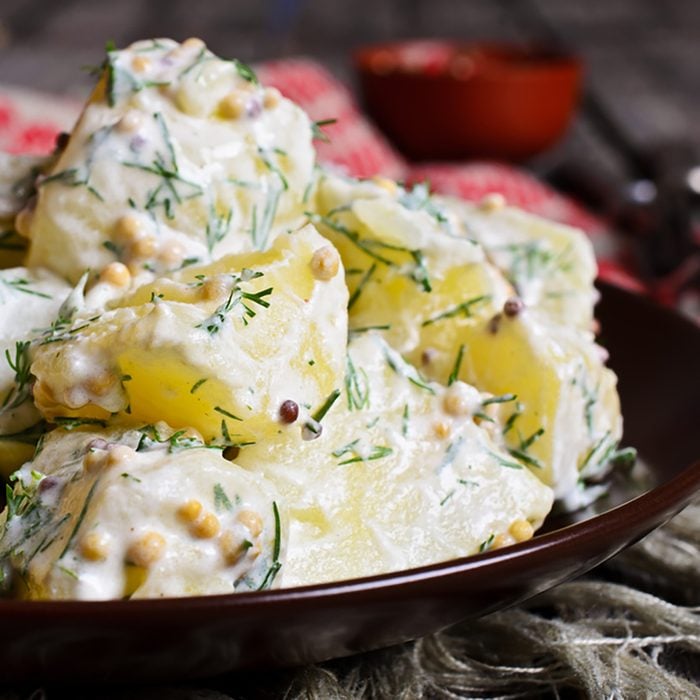
Mayo-based salads
Potato salad and other mayonnaise-based sides can also pack a double whammy. “Mayonnaise-filled salads that sit out too long can be more susceptible to contamination and food-borne illness,” Wright says. “And from a nutritional standpoint, they really pack the calories.” Take the opportunity to try a grain-based salad you might not have tried before, or opt for roasted vegetables. Check out these 15 things you should never, ever eat in a restaurant.
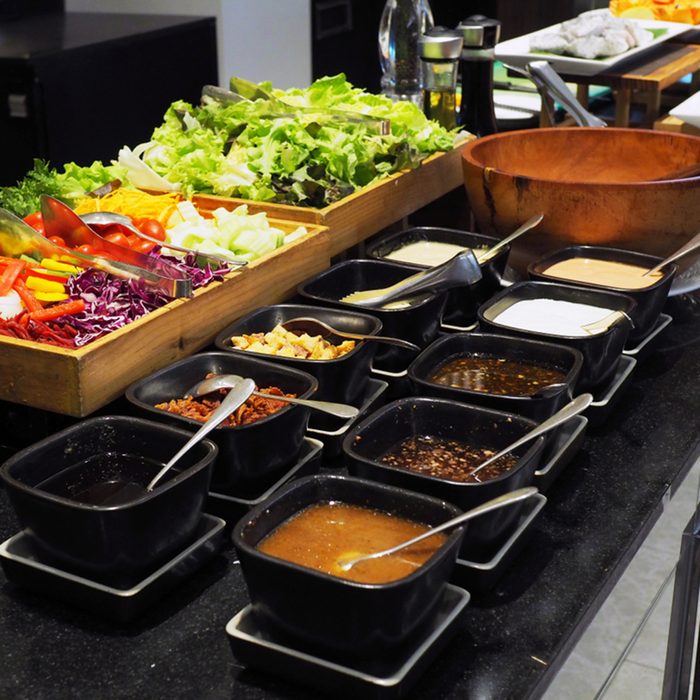
Dressings
Creamy dressings pose some of the same pitfalls as mayonnaise-based dishes. In addition, they are often highly processed and contain lots of sodium, sugar and preservatives, Ficek says. Olive oil and vinegar are a much better bet. Stay well by avoiding these 9 things food-poisoning experts never eat.
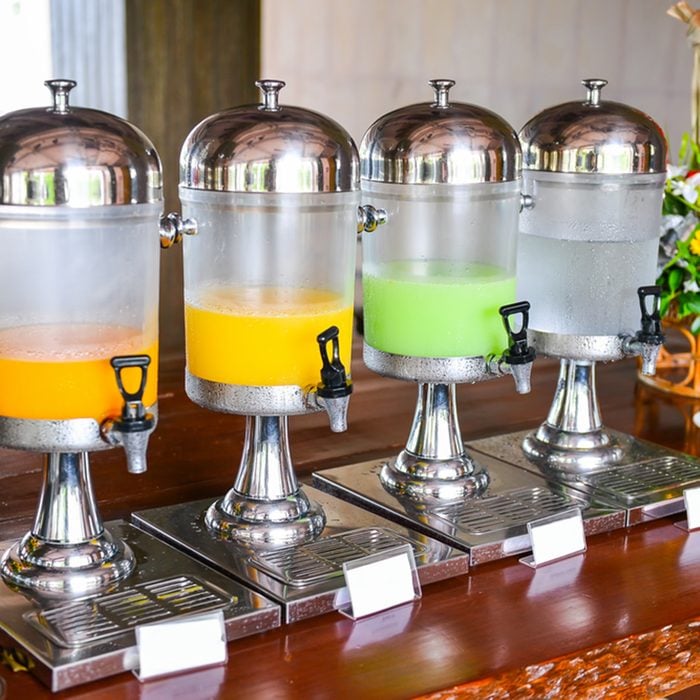
Sweetened beverages
We sometimes don’t think of drinks when we’re watching what we eat, but those calories can add up, too. Beverages like sweet tea and lemonade often contain lots of sugar. And if you opt for mimosas, the alcohol and orange juice also sneak in extra calories. Instead, ask for sparkling water or unsweetened iced tea, Wright recommends.